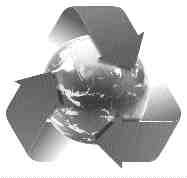
Features
Research & Innovation
THE LATEST ON ENDOCRINE DISRUPTORS
In many cases, hormones in animals and humans are chemically identical. This similarity suggests that although few human studies have been done, endocrine-related effects first observed in animals can...
March 1, 1999 By Pulp & Paper Canada

In many cases, hormones in animals and humans are chemically identical. This similarity suggests that although few human studies have been done, endocrine-related effects first observed in animals can also be manifested in human populations.
The scientific community has attempted to link increased human exposure to EDCs and health problems. Some examples include a higher level of PCB in the blood of women who suffer miscarriages, and a growing frequency of prostate cancer in American men (up 126%) from 1973 to 1991. These links have limited degrees of certainty, however, many scientists agree that if the problem is environmental exposure, then it will show up first in species with shorter life cycles than ours. Reported EDC effects in wildlife have included thyroid system disorders, disrupted sexual development, decreased fertility, gross birth deformities, decreased hatching, reduced immune response, neurological and behavioral changes in later life.
The World Wildlife Fund (WWF) has published a list of chemicals that have widespread distribution as well as reproductive and endocrine-disrupting effects.
One of the WWF’s priorities has been a campaign to promote the phase-out of nonylphenol ethoxylates (NPEs) [1]. NPEs are widely used non-ionic surfactants that belong to the alkylphenol poly ethoxylates (APEs) group. The metabolites of NPEs can accumulate in aquatic organisms and some have been found to mimic estrogen hormones. NPEs are now on the second priority substance list of the Canadian Environmental Protection Act (CEPA).
The 1996 WWF report mentions that the pulp and paper industry is responsible for the discharge of NPEs into the environment via their effluents and sludges.
In pulp and paper mills, NPEs can be present in surfactants used for boil-outs, or metered into the pulping process. Wetting agents, biocides, dispersants, defoamers, deinking chemicals and coating additives can also contain NPEs or APEs.
In the past 10 years, several Scandinavian and North American studies have dealt with reproductive effects in natural fish populations downstream from pulp and paper mills. Many of these studies were conducted at bleached kraft mills without secondary effluent treatment and reported effects such as reduced gonad size, decreased egg production, altered expression of secondary sexual characteristics and depression of plasma and gonadal reproductive hormone levels. Although these effects have now been largely reduced due to effluent treatment, some research suggests that biologically-treated mill effluents can still cause reproductive alterations in fish at certain concentrations [1,2]. Whether these concentrations occur in the field is a site-specific issue that depends on mill effluent quality and flow as well as effluent dispersion characteristics in the receiving environment.
Monique Dub (Washburn & Gillis Associates, Fredericton, NB) points out that one of the current challenges is the interpretation of effects measured in fish. Although hormone depression/induction has been correlated to low fecundity and reduced gonad sizes, the cause of the effect is unknown. Furthermore, there is a lack of knowledge about the normal cycling of hormone levels in natural populations. These aspects are currently being looked at as part her ongoing research at the University of New Brunswick.
Two Canadian pulp and paper companies, Bowater and Nexfor, have decided to address the EDC issue pro-actively by implementing a program to phase out the use of APEs and NPEs at their mills. Catherine Cobden, Bowater’s corporate environmental director stated that the objective was to try to curtail the use of NPE- and APE-containing products if substitutes were available. In mid-1997, both companies identified NPEs and APEs used at mills, after which alternative products were tested by conducting trials or substituting chemicals when this could be done cost-effectively. Overall, says Cobden, the use of NPE- and APE-containing products are being phased out and new chemicals are being screened before use to ensure they are NPE- and APE-free.
Nexfor has adopted a similar approach says John Roberts, its corporate environmental director. He notes that certain environmental issues like the use of NPEs and APEs can be addressed pro-actively, and can be resolved at low cost and without major process changes.
In the case of NPEs, significant initiatives both by government and private sector have been undertaken to reduce or phase out their use around the world. The WWF states that initiatives in Canada should improve considerably as a result of the CEPA regulation process and a general interest in hormone disrupting chemicals.
LITERATURE
1. Nonylphenol ethoxylatyes and their use in Canada. Report published by the World Wildlife Fund, December 1996.
2. MUNKITTRICK, K.R. et al. Response of hepatic MFO activity and plasma sex steroids to secondary treatment of bleached kraft pulp mill effluent and mill shutdown. Environ. Toxicol. Chem. 11: 1427-1438, 1992.Endocrine disrupting chemicals (EDC) are chemicals that can mimic hormones produced by humans and animals. They interfere with the endocrine system, which is made up of glands (e.g. pancreas, adrenal glands, thyroid, thymus) which release hormones into the bloodstream. Of current concern are the synthetic EDCs, which are produced by industrial manufacture or as by-products of such processes. Research has demonstrated that some of these compounds can cause effects at concentrations in the part-per-trillion range.
The following organizations can provide more information about EDCs.
OrganizationWeb Address
World Wildlife FundHttp://www.wwfcanada.org/hormone-disruptors/index.html
U.S. Environmental Protection AgencyHttp://www.epa.gov/endocrine/
Organization for Economic Cooperation and Development Http://www.oecd.org/ehs/endocrin.htm
Sierra ClubHttp://www.sierraclub.org/misc/envirodisruptors.html
Society of Environmental Toxicology and Chemistry (SETAC)
Http://www.setac.org
Books: 1) Principles and Processes in Evaluating Endocrine Disruption in Wildlife, 2) Chemically Induced Alterations in Functional Development and Reproduction of Fishes
Print this page